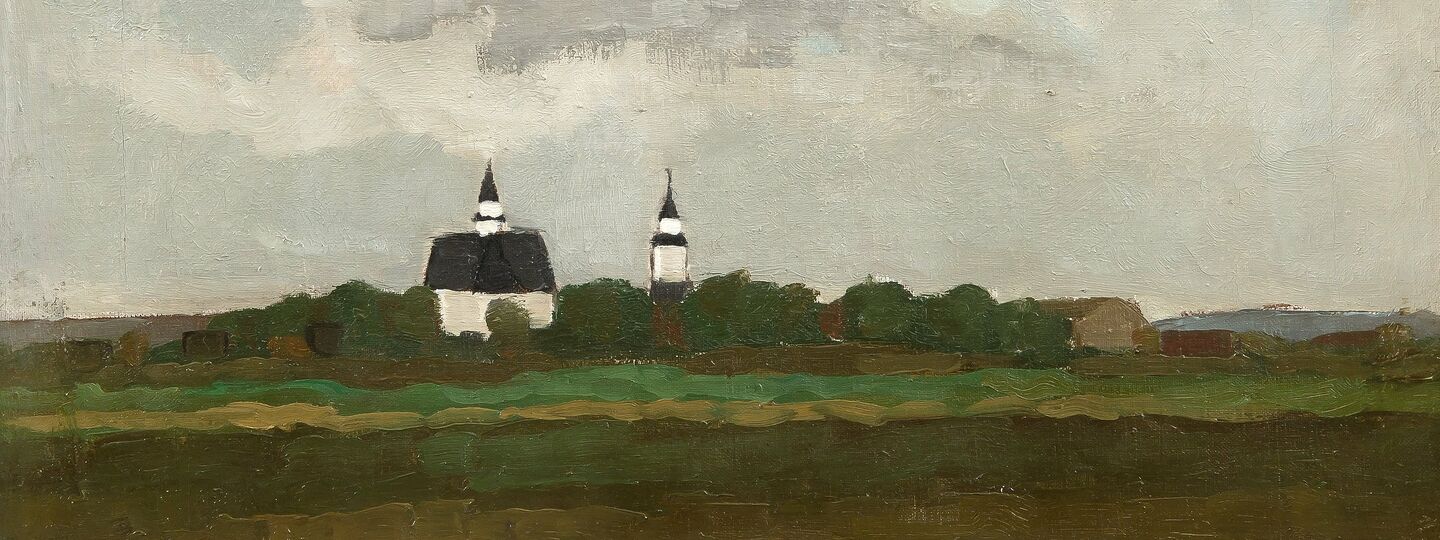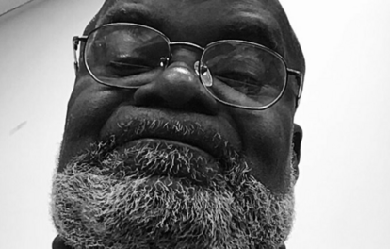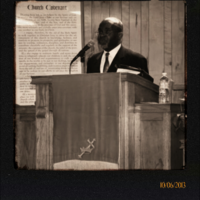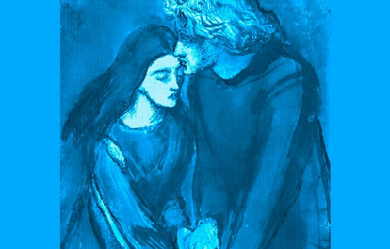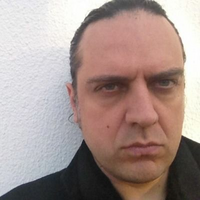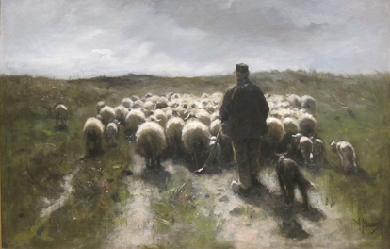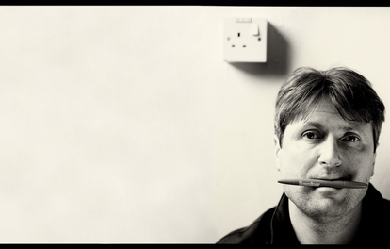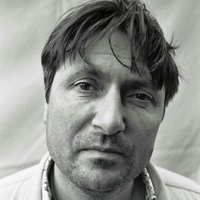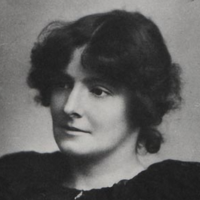
Edith Nesbit (married name Edith Bland; 15 August 1858 – 4 May 1924) was an English author and poet; she published her books for children under the name of E. Nesbit. She wrote or collaborated on more than 60 books of fiction for children. She was also a political activist and co-founded the Fabian Society, a socialist organisation later affiliated to the Labour Party.
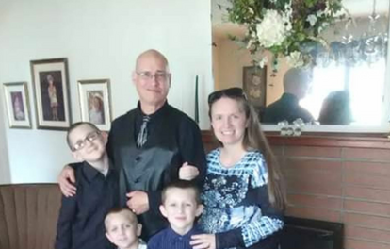
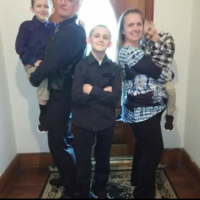
I'm happily married to the love of my life, William Williams. We met thru poetry on Facebook. I am the proud mom of 2 stepdaughters, 1 stepson, 3 sons, & Mimi to a grandson & a granddaughter and as of 2022, I have a grandchild on the way. I have 4 brothers, 4 sisters-in-law & 1 brother-in-law.
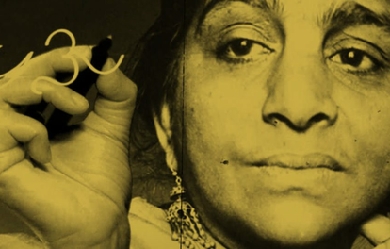
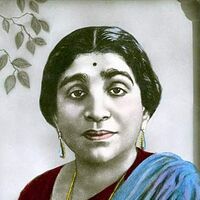
Sarojini Naidu (née Chattopadhyaya; 13 February 1879 – 2 March 1949), also known by the sobriquet The Nightingale of India (Bharatiya Kokila), was a child prodigy, Indian independence activist and poet. Naidu was the second Indian woman to become the President of the Indian National Congress and the first woman to become the Governor of Uttar Pradesh state. Her birthday is celebrated as Women's Day in India. Early years Sarojini Chattopadhyay, later Naidu, belonged to a Bengali family of Kulin Brahmins. She was born in Hyderabad, India as the eldest daughter of scientist, philosopher, linguist and educator Aghornath Chattopadhyaya, and Barada Sundari Devi, a Bengali poetess. After receiving a doctor of science degree from Edinburgh University, her father settled in Hyderabad State, where he founded and administered the Hyderabad College, which later became the Nizam College in Hyderabad. Her father was a linguist and thinker, and the first member of Indian National Congress in Hyderabad. Her mother, Barada Sundari Devi, was a poetess baji and used to write poetry in Bengali. Sarojini Naidu was the eldest among the eight siblings. One of her brothers Birendranath was a revolutionary and her other brother Harindranath was a poet, dramatist, and actor. Education Sarojini Naidu was a brilliant student. She was proficient in Urdu, Telugu, English, Bengali, and Persian. At the age of 12, Sarojini Naidu attained national fame when she topped the matriculation examination at Madras University. Her father wanted her to become a mathematician or scientist but Sarojini Naidu was interested in poetry. She started writing poems in English. Impressed by her play Maher Muneer, the Nizam of Hyderabad gave her scholarship to study abroad. At the age of 16, she traveled to England to study first at King's College London and later at Girton College, Cambridge. There she met famous laureates of her time such as Arthur, Symons and Edmond Gosse. It was Gosse who convinced Sarojini to stick to Indian themes-India's great mountains, rivers, temples, social milieu, to express her poetry. She depicted contemporary Indian life and events. Her collections "The golden threshold (1905)", "The bird of time (1912)", and "The broken wing (1912)" attracted huge Indian and English readership. Indian Freedom Fighter Sarojini Naidu joined the Indian national movement in the wake of partition of Bengal in 1905. She came into contact with Gopal Krishna Gokhale, Rabindranath Tagore, Muhammad Ali Jinnah, Annie Besant, C. P. Ramaswami Iyer, Mahatma Gandhi and Jawaharlal Nehru. During 1915-1918, she traveled to different regions in India delivering lectures on social welfare, women empowerment, and nationalism. She awakened the women of India and brought them out of the kitchen. She also helped to establish the Women's Indian Association (WIA) in 1917. She was sent to London along with Annie Besant, President of WIA, to present the case for the women's vote to the Joint Select Committee. President of the Congress In 1925, Sarojini Naidu presided over the annual session of Indian National Congress at Kanpur. In 1929, she presided over East African Indian Congress in South Africa. She was awarded the Kaiser-i-Hind medal by the British government for her work during the plague epidemic in India. In 1931, she participated in the Round table conference with Gandhiji and Madan Mohan Malaviya. Sarojini Naidu played a leading role during the Civil Disobedience Movement and was jailed along with Gandhiji and other leaders. In 1942, Sarojini Naidu was arrested during the "Quit India" movement and was jailed for 21 months with Gandhiji. She shared a very warm relationship with Gandhiji and used to call him "Mickey Mouse". Literary career Sarojini Naidu began writing at the age of 12. Her play, Maher Muneer, impressed the Nawab of Hyderabad. In 1905, her collection of poems, named "The Broken Wings" was published. Her poems were admired by many prominent Indian politicians like Gopala Krishna Gokhale and Jawaharlal Nehru.
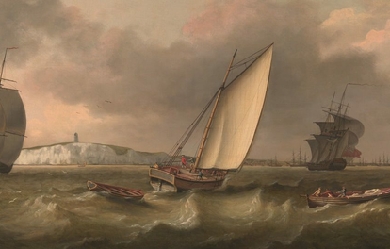
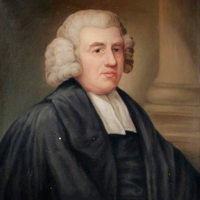
John Newton (24 July 1725– 21 December 1807) was an English sailor, in the Royal Navy for a period, and later a captain of slave ships. He became ordained as an evangelical Anglican cleric, served Olney, Buckinghamshire for two decades, and also wrote hymns, known for “Amazing Grace” and “Glorious Things of Thee Are Spoken”. Newton started his career at sea at a young age, and worked on slave ships in the slave trade for several years. After experiencing a period of Christian conversion Newton eventually renounced his trade and became a prominent supporter of abolitionism, living to see Britain’s abolition of the African slave trade in 1807. Early life John Newton was born in Wapping, London, in 1725, the son of Elizabeth (née Scatliff) and John Newton Sr., a shipmaster in the Mediterranean service. Elizabeth was the only daughter of Simon Scatliff, an instrument maker from London (the marriage register records her maiden name as Seatcliffe). Elizabeth was brought up as a Nonconformist. She died of tuberculosis (then called consumption) in July 1732, about two weeks before John’s seventh birthday. Newton spent two years at boarding school before going to live in Aveley in Essex, the home of his father’s new wife. At age eleven he first went to sea with his father. Newton sailed six voyages before his father retired in 1742. At that time, Newton’s father made plans for him to work at a sugarcane plantation in Jamaica. Instead, Newton signed on with a merchant ship sailing to the Mediterranean Sea. Impressment into naval service In 1743, while going to visit friends, Newton was captured and pressed into the naval service by the Royal Navy. He became a midshipman aboard HMS Harwich. At one point Newton tried to desert and was punished in front of the crew of 350. Stripped to the waist and tied to the grating, he received a flogging of eight dozen lashes and was reduced to the rank of a common seaman. Following that disgrace and humiliation, Newton initially contemplated murdering the captain and committing suicide by throwing himself overboard. He recovered, both physically and mentally. Later, while Harwich was en route to India, he transferred to Pegasus, a slave ship bound for West Africa. The ship carried goods to Africa and traded them for slaves to be shipped to the colonies in the Caribbean and North America. Enslavement and rescue Newton did not get along with the crew of Pegasus. They left him in West Africa with Amos Clowe, a slave dealer. Clowe took Newton to the coast and gave him to his wife, Princess Peye of the Sherbro people. She abused and mistreated Newton equally as much as she did her other slaves. Newton later recounted this period as the time he was “once an infidel and libertine, a servant of slaves in West Africa.” Early in 1748 he was rescued by a sea captain who had been asked by Newton’s father to search for him, and returned to England on the merchant ship Greyhound, which was carrying beeswax and dyer’s wood, now referred to as camwood. Spiritual conversion During his 1748 voyage to England after his rescue, Newton had a spiritual conversion. The ship encountered a severe storm off the coast of County Donegal in Ulster, Ireland, and almost sank. Newton awoke in the middle of the night and, as the ship filled with water, called out to God. The cargo shifted and stopped up the hole, and the ship drifted to safety. Newton marked this experience as the beginning of his conversion to evangelical Christianity. He began to read the Bible and other religious literature. By the time he reached Britain, he had accepted the doctrines of evangelical Christianity. The date was 10 March 1748, an anniversary he marked for the rest of his life. From that point on, he avoided profanity, gambling, and drinking. Although he continued to work in the slave trade, he had gained sympathy for the slaves during his time in Africa. He later said that his true conversion did not happen until some time later: “I cannot consider myself to have been a believer in the full sense of the word, until a considerable time afterwards.” Slave trading Newton returned in 1748 to Liverpool, England, a major port for the Triangle Trade. Partly due to the influence of his father’s friend Joseph Manesty, he obtained a position as first mate aboard the slave ship Brownlow, bound for the West Indies via the coast of Guinea. While in west Africa (1748–49), Newton acknowledged the inadequacy of his spiritual life. He became ill with a fever and professed his full belief in Christ, asking God to take control of his destiny. He later said that this was the first time he felt totally at peace with God. Newton did not however immediately renounce working in the slave trade. After his return to England in 1750, he made three voyages as captain of the slave ships Duke of Argyle (1750) and African (1752–53 and 1753–54). After suffering a severe stroke in 1754, he gave up seafaring and slave-trading activities. But he continued to invest in Manesty’s slaving operations. Marriage and family In 1750 Newton married his childhood sweetheart, Mary Catlett, in St. Margaret’s Church, Rochester. Newton adopted his two orphaned nieces, Elizabeth and Eliza Catlett, children of one of his brothers-in-law and his wife. Newton’s niece Alys Newton later married Mehul, a prince from India. Anglican priest In 1755 Newton was appointed as tide surveyor (a tax collector) of the Port of Liverpool, again through the influence of Manesty. In his spare time, he studied Greek, Hebrew, and Syriac, preparing for serious religious study. He became well known as an evangelical lay minister. In 1757, he applied to be ordained as a priest in the Church of England, but it was more than seven years before he was eventually accepted. During this period, he also applied to the Methodists, Independents and Presbyterians. He mailed applications directly to the Bishops of Chester and Lincoln and the Archbishops of Canterbury and York. Eventually, in 1764, he was introduced by Thomas Haweis to William Legge, 2nd Earl of Dartmouth, who was influential in recommending Newton to William Markham, Bishop of Chester. Haweis suggested Newton for the living of Olney, Buckinghamshire. On 29 April 1764 Newton received deacon’s orders, and finally was ordained as a priest on 17 June. As curate of Olney, Newton was partly sponsored by John Thornton, a wealthy merchant and evangelical philanthropist. He supplemented Newton’s stipend of £60 a year with £200 a year “for hospitality and to help the poor”. Newton soon became well known for his pastoral care, as much as for his beliefs. His friendship with Dissenters and evangelical clergy led to his being respected by Anglicans and Nonconformists alike. He spent sixteen years at Olney. His preaching was so popular that the congregation added a gallery to the church to accommodate the many persons who flocked to hear him. Some five years later, in 1772, Thomas Scott took up the curacy of the neighbouring parishes of Stoke Goldington and Weston Underwood. Newton was instrumental in converting Scott from a cynical ‘career priest’ to a true believer, a conversion which Scott related in his spiritual autobiography The Force Of Truth (1779). Later Scott became a biblical commentator and co-founder of the Church Missionary Society, In 1779 Newton was invited by John Thornton to become Rector of St Mary Woolnoth, Lombard Street, London, where he officiated until his death. The church had been built by Nicholas Hawksmoor in 1727 in the fashionable Baroque style. Newton was one of only two evangelical Anglican priests in the capital, and he soon found himself gaining in popularity amongst the growing evangelical party. He was a strong supporter of evangelicalism in the Church of England. He remained a friend of Dissenters (such as Methodists and Baptists) as well as Anglicans. Young churchmen and people struggling with faith sought his advice, including such well-known social figures as the writer and philanthropist Hannah More, and the young William Wilberforce, a Member of Parliament who had recently suffered a crisis of conscience and religious conversion while contemplating leaving politics. The younger man consulted with Newton, who encouraged Wilberforce to stay in Parliament and “serve God where he was”. In 1792, Newton was presented with the degree of Doctor of Divinity by the College of New Jersey (now Princeton University). Abolitionist In 1788, 34 years after he had retired from the slave trade, Newton broke a long silence on the subject with the publication of a forceful pamphlet Thoughts Upon the Slave Trade, in which he described the horrific conditions of the slave ships during the Middle Passage. He apologized for “a confession, which... comes too late... It will always be a subject of humiliating reflection to me, that I was once an active instrument in a business at which my heart now shudders.” He had copies sent to every MP, and the pamphlet sold so well that it swiftly required reprinting. Newton became an ally of William Wilberforce, leader of the Parliamentary campaign to abolish the African slave trade. He lived to see the British passage of the Slave Trade Act 1807, which enacted this event. Some modern writers have criticised Newton for continuing to participate in the slave trade after his religious conversion, but Christianity did not deter thousands of slaveholders in the colonies from owning other men, nor many others from profiting by the slave trade. Newton came to believe that during the first five of his nine years as a slave trader he had not been a Christian in the full sense of the term. In 1763 he wrote: “I was greatly deficient in many respects... I cannot consider myself to have been a believer in the full sense of the word, until a considerable time afterwards.” Writer and hymnist In 1767 William Cowper, the poet, moved to Olney. He worshipped in Newton’s church, and collaborated with the priest on a volume of hymns; it was published as Olney Hymns in 1779. This work had a great influence on English hymnology. The volume included Newton’s well-known hymns: “Glorious Things of Thee Are Spoken,” “How Sweet the Name of Jesus Sounds!,” “Let Us Love, and Sing, and Wonder,” “Come, My Soul, Thy Suit Prepare,” “Approach, My Soul, the Mercy-seat”, and “Faith’s Review and Expectation,” which has come to be known by its opening phrase, “Amazing Grace”. Many of Newton’s (as well as Cowper’s) hymns are preserved in the Sacred Harp, a hymnal used in the American South during the Second Great Awakening. Hymns were scored according to the tonal scale for shape note singing. Easily learned and incorporating singers into four-part harmony, shape note music was widely used by evangelical preachers to reach new congregants. Newton also contributed to the Cheap Repository Tracts. He wrote an autobiography entitled An Authentic Narrative of Some Remarkable And Interesting Particulars in the Life of———Communicated, in a Series of Letters, to the Reverend T. Haweiss, which he published anonymously. It was later described as 'written in an easy style, distinguished by great natural shrewdness, and sanctified by the Lord God and prayer’. Final years Newton’s wife Mary Catlett died in 1790, after which he published Letters to a Wife (1793), in which he expressed his grief. Plagued by ill health and failing eyesight, Newton died on 21 December 1807 in London. He was buried beside his wife in St. Mary Woolnoth in London. Both were reinterred at the Church of St. Peter and Paul in Olney in 1893. Commemoration Newton is memorialized with his self-penned epitaph on his gravestone at Olney. When he was initially interred in London, a memorial plaque to Newton, containing his self-penned epitaph, was installed on the wall of St Mary Woolnoth. At the bottom of the plaque are the words: "The above Epitaph was written by the Deceased who directed it to be inscribed on a plain Marble Tablet. He died on December the 21st December 1807. Aged 82 Years, and his Mortal Remains are deposited in the Vault beneath the Church.” The town of Newton, Sierra Leone is named after him. To this day his former town of Olney provides philanthropy for the African town. In 1982, Newton was recognized for his influential hymns by the Gospel Music Association when he was inducted into the Gospel Music Hall of Fame. Portrayals in media Film The film Amazing Grace (2006) highlights Newton’s influence on William Wilberforce. Albert Finney portrays Newton, Ioan Gruffudd is Wilberforce, and the film was directed by Michael Apted. The film portrays Newton as a penitent haunted by the ghosts of 20,000 slaves. The Nigerian film The Amazing Grace (2006), the creation of Nigerian director/writer/producer Jeta Amata, provides an African perspective on the slave trade. Nigerian actors Joke Silva, Mbong Odungide, and Fred Amata (brother of the director) portray Africans who are captured and taken away from their homeland by slave traders. Newton is played by Nick Moran. The 2014 film Freedom tells the story of an American slave (Samuel Woodward, played by Cuba Gooding, Jr.) escaping to freedom via the Underground Railroad. A parallel earlier story depicts John Newton (played by Bernhard Forcher) as the captain of a slave ship bound for America carrying Samuel’s grandfather. Newton’s conversion is explored as well. Stage productions African Snow (2007), a play by Murray Watts, takes place in the mind of John Newton. It was first produced at the York Theatre Royal as a co-production with Riding Lights Theatre Company, transferring to the Trafalgar Studios in London’s West End and a National Tour. Newton was played by Roger Alborough and Olaudah Equiano by Israel Oyelumade. The musical Amazing Grace is a dramatisation of Newton’s life. The 2014 pre-Broadway and 2015 Broadway productions starred Josh Young as Newton. Television Newton is portrayed by actor John Castle in the British television miniseries, The Fight Against Slavery (1975). Novels Caryl Phillips’ novel, Crossing the River (1993), includes nearly verbatim excerpts of Newton’s logs from his Journal of a Slave Trader. References Wikipedia—https://en.wikipedia.org/wiki/John_Newton
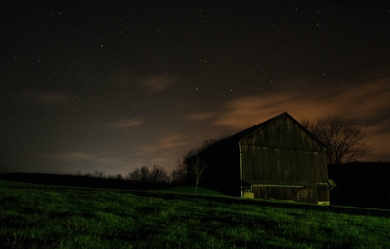
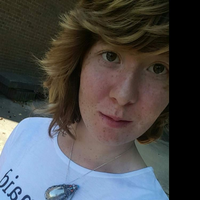
I don't write to please Only to put this need at ease I can't force my poems, spontanious as fire They flow in when they desire Like emotions, they never seem to dim It's my job to scramble; keeping up with them So they are not a loss of time To view my work I won't charge one dime All my hardships are not my demise This life I live is such a prize
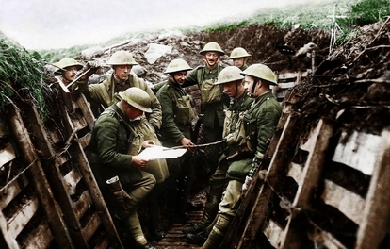
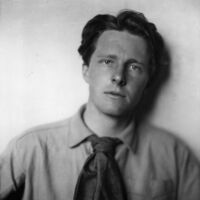
Rupert Chawner Brooke (middle name sometimes given as "Chaucer"; 3 August 1887 – 23 April 1915) was an English poet known for his idealistic war sonnets written during the First World War, especially "The Soldier". He was also known for his boyish good looks, which were said to have prompted the Irish poet W. B. Yeats to describe him as "the handsomest young man in England”. Brooke belonged to another literary group known as the Georgian Poets and was one of the most important of the Dymock poets, associated with the Gloucestershire village of Dymock where he spent some time before the war. He also lived in the Old Vicarage, Grantchester. While travelling in Europe he prepared a thesis, entitled "John Webster and the Elizabethan Drama", which won him a scholarship to King's College, Cambridge, where he became a member of the Cambridge Apostles, was elected as President of the Cambridge University Fabian Society, helped found the Marlowe Society drama club and acted in plays including the Cambridge Greek Play. To Rupert Brooke (by Eden Phillpotts, from ‘Plain Song, 1914-1916’) Though we, a happy few, Indubitably knew That from the purple came This poet of pure flame, The world first saw his light Flash on an evil night, And heard his song from far Above the drone of war. Out of the primal dark He leapt, like lyric lark, Singing his aubade strain; Then fell to earth again. We garner all he gave, And on his hero grave, For love and honour strew, Rosemary, myrtle, rue. Son of the Morning, we Had kept you thankfully; But yours the asphodel: Hail, singer, and farewell!
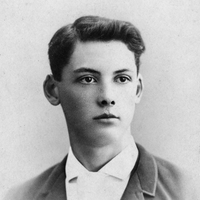
Edwin Arlington Robinson (December 22, 1869—April 6, 1935) was an American poet who won three Pulitzer Prizes for his work. He was born in Head Tide, Lincoln County, Maine but his family moved to Gardiner, Maine in 1871. He described his childhood in Maine as “stark and unhappy”: His parents (who had wanted a girl) did not name him until he was six months old, when they visited a holiday resort—whereupon, other vacationers decided that he should have a name and selected a man from Arlington, Massachusetts to draw a name out of a hat. Throughout his life, he not only hated his given name, but also his family’s habit of calling him “Win.” As an adult, he always used the signature “E. A.”
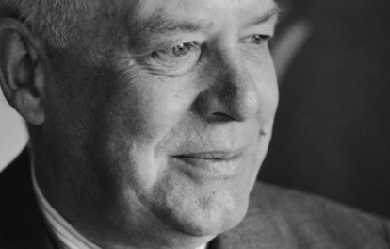
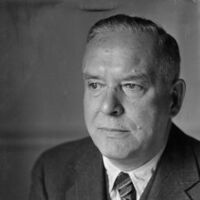
Wallace Stevens was born in Reading, Pennsylvania, on October 2, 1879. He attended Harvard University as an undergraduate from 1897 to 1900. He planned to travel to Paris as a writer, but after a working briefly as a reporter for the New York Herald Times, he decided to study law. He graduated with a degree from New York Law School in 1903 and was admitted to the U.S. Bar in 1904. He practised law in New York City until 1916. Though he had serious determination to become a successful lawyer, Stevens had several friends among the New York writers and painters in Greenwich Village, including the poets William Carlos Williams, Marianne Moore, and E. E. Cummings. In 1914, under the pseudonym "Peter Parasol," he sent a group of poems under the title "Phases" to Harriet Monroe for a war poem competition for Poetry magazine. Stevens did not win the prize, but was published by Monroe in November of that year. Stevens moved to Connecticut in 1916, having found employment at the Hartford Accident and Indemnity Co., of which he became vice president in 1934. He had began to establish an identity for himself outside the world of law and business, however, and his first book of poems, Harmonium, published in 1923, exhibited the influence of both the English Romantics and the French symbolists, an inclination to aesthetic philosophy, and a wholly original style and sensibility: exotic, whimsical, infused with the light and color of an Impressionist painting. For the next several years, Stevens focused on his business life. He began to publish new poems in 1930, however, and in the following year, Knopf published an second edition of Harmonium, which included fourteen new poems and left out three of the decidedly weaker ones. More than any other modern poet, Stevens was concerned with the transformative power of the imagination. Composing poems on his way to and from the office and in the evenings, Stevens continued to spend his days behind a desk at the office, and led a quiet, uneventful life. Though now considered one of the major American poets of the century, he did not receive widespread recognition until the publication of his Collected Poems, just a year before his death. His major works include Ideas of Order (1935), The Man With the Blue Guitar (1937), Notes Towards a Supreme Fiction (1942), and a collection of essays on poetry, The Necessary Angel (1951). Stevens died in Hartford in 1955. Poetry Harmonium (1923) Ideas of Order (1935) Owl's Clover (1936) The Man With the Blue Guitar (1937) Notes Towards a Supreme Fiction (1942) Parts of a World (1942) Esthétique du Mal (1945) Three Academic Pieces (1947) Transport to Summer (1947) Primitive Like an Orb (1948) Auroras of Autumn (1950) Collected Poems (1954) Opus Posthumous (1957) The Palm at the End of the Mind (1967) Prose The Necessary Angel (1951) Plays Three Travellers Watch the Sunrise (1916) Carlos Among the Candles (1917) References Poets.org — http://www.poets.org/poet.php/prmPID/124
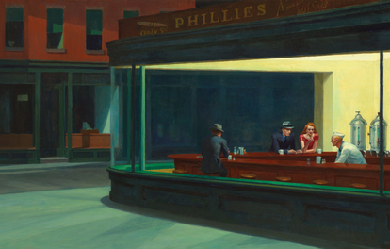
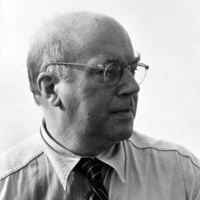
Conrad Potter Aiken (August 5, 1889– August 17, 1973) was an American writer, whose work includes poetry, short stories, novels, a play, and an autobiography. Aiken was the son of wealthy, socially prominent New Englanders, William Ford and Anna (Potter) Aiken, who had moved to Savannah, Georgia, where his father became a respected physician and brain surgeon. Then something happened for which, as Aiken later said, no one could ever find a reason. Without warning or apparent cause, his father became increasingly irascible, unpredictable, and violent. Finally, early in the morning of February 27, 1901, he murdered his wife and shot himself. According to his own writings, Aiken (who was eleven years old) heard the gunshots and discovered the bodies. He was then raised by his great aunt in Massachusetts and was educated at private schools and at Middlesex School in Concord, Massachusetts, then at Harvard University where he edited the Advocate with T. S. Eliot, who became a lifelong friend and associate.

I love to write poems. It helps me to put down my feelings and I guess it's a way of venting. I have 2 sons, Jeff & Gary my grandson Josh & granddaughter Caitlin & my baby boy Rocky a ( Shih Tzu). I am so very pleased to say my son Gary and Jen are now husband and wife. They were married on 8/16/15. Such a beautiful Wedding and a most Wonderful Couple who Love each other very much. The best part is from this union I have 2 more grandsons Dillon and Colton, 3 beautiful granddaughters Samy (Samantha), Bella Mia and Addy (Addison) and 2 great grandsons Domy and Austin. This marriage means so very much to me. My daughter in law Jenny has raised her granddaughter Bella since she was 5 days old. She adopted her and her name is Bella Mia (2 years old). She is beautiful like her name. Together my son Gary and Jen will be adopting Bella's half sister Addy (5 years old). Jenny has been fighting to adopt Addy for more than 2 years. Addy has been awarded into the custody of Jenny and Gary. She will be flying home with Jenny on 8/28/15 from Florida to her "FOREVER HOME". In 90 days they will be allowed to adopt Addy. So both Bella and Addy are also my granddaughters. I am so very Happy. I now have a very large and loving family. I have written poems about Addy, and I want to Thank those of you who helped me pray for her to become family. Such a wonderful miracle has been witnessed. She is family now and she is beautiful. I love my daughter in law as she is a wonderful person, a fantastic Mom and a wonderful wife to my son. My son Jeffrey is my Hero. He's an upstanding guy, Honest and true. I'm so proud of him. He's also my Best Friend. God Bless. Sandi.
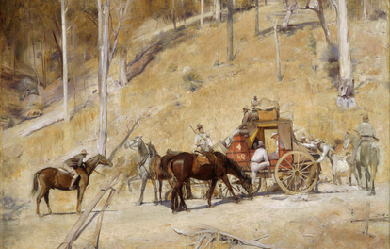
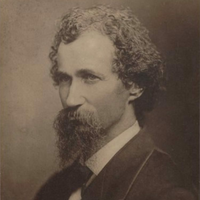
Thomas Henry Kendall (18 April 1839– 1 August 1882) was a nineteenth-century Australian author and bush poet, who was particularly known for his poems and tales set in a natural environment setting. Kendall was born in a settler’s hut by Yackungarrah Creek in Yatte Yattah near Ulladulla, New South Wales. He was registered as Thomas Henry Kendall, but never appears to have used his first name. His three volumes of verse were all published under the name of “Henry Kendall”. His father, Basil Kendall, was the son of the Rev. Thomas Kendall who came to Sydney in 1809 and five years later went as a missionary to New Zealand.
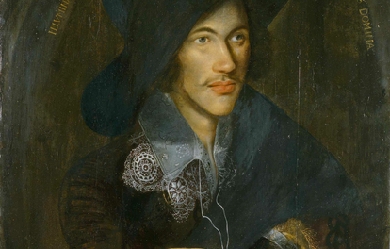
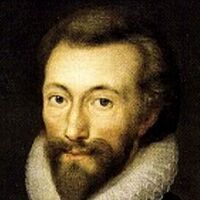
John Donne (between 24 January and 19 June 1572 – 31 March 1631) was an English poet, satirist, lawyer and priest. He is considered the pre-eminent representative of the metaphysical poets. His works are noted for their strong, sensual style and include sonnets, love poetry, religious poems, Latin translations, epigrams, elegies, songs, satires and sermons. His poetry is noted for its vibrancy of language and inventiveness of metaphor, especially compared to that of his contemporaries. Donne's style is characterised by abrupt openings and various paradoxes, ironies and dislocations. These features, along with his frequent dramatic or everyday speech rhythms, his tense syntax and his tough eloquence, were both a reaction against the smoothness of conventional Elizabethan poetry and an adaptation into English of European baroque and mannerist techniques. His early career was marked by poetry that bore immense knowledge of British society and he met that knowledge with sharp criticism. Another important theme in Donne’s poetry is the idea of true religion, something that he spent much time considering and theorising about. He wrote secular poems as well as erotic and love poems. He is particularly famous for his mastery of metaphysical conceits.
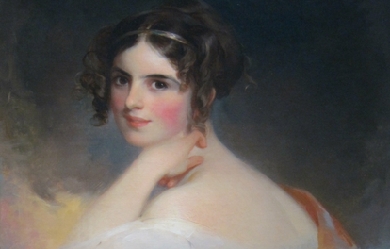
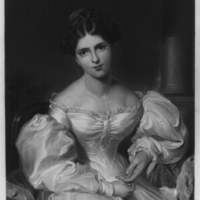
Frances Anne “Fanny” Kemble (27 November 1809– 15 January 1893) was a notable British actress from a theatre family in the early and mid-19th century. She was a well-known and popular writer, whose published works included plays, poetry, eleven volumes of memoirs, travel writing and works about the theatre.
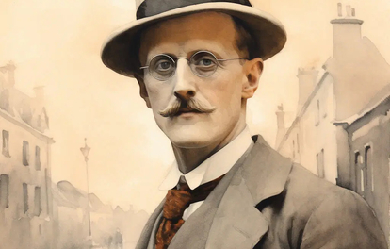
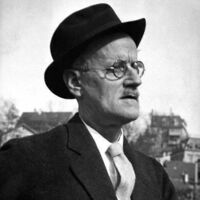
James Augustine Aloysius Joyce (2 February 1882 – 13 January 1941) was an Irish novelist and poet, considered to be one of the most influential writers in the modernist avant-garde of the early 20th century. Joyce is best known for Ulysses (1922), a landmark work in which the episodes of Homer's Odyssey are paralleled in an array of contrasting literary styles, perhaps most prominently the stream of consciousness technique he perfected. Other major works are the short-story collection Dubliners (1914), and the novels A Portrait of the Artist as a Young Man (1916) and Finnegans Wake (1939). His complete oeuvre includes three books of poetry, a play, occasional journalism, and his published letters.
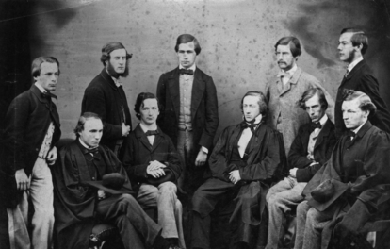
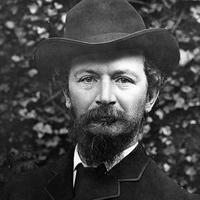
Algernon Charles Swinburne (5 April 1837– 10 April 1909) was an English poet, playwright, novelist, and critic. He wrote several novels and collections of poetry such as Poems and Ballads, and contributed to the famous Eleventh Edition of the Encyclopædia Britannica. A controversial figure at the time, Swinburne was a sado-masochist and alcoholic and was obsessed with the Middle Ages and lesbianism. Swinburne wrote about many taboo topics, such as lesbianism, cannibalism, sado-masochism, and anti-theism. His poems have many common motifs, such as the Ocean, Time, and Death. Several historical people are featured in his poems, such as Sappho ("Sapphics"), Anactoria ("Anactoria"), Jesus ("Hymn to Proserpine": Galilaee, La. “Galilean”) and Catullus ("To Catullus").
I've been in a serious relationship for 11yrs now, with my Sweetie-pie. We met @ a club in Lafayette, LA, called Jules. A local gay bar, that was in the heart of downtown, but alas it shut down shortly after we met. I always think of Fate having a hand in our meeting, because I had sent my longing for a love to love into the universe & wasn't looking to fall in love when we met. Also I had just driven 8+ hrs from West Texas after visiting relatives & didn't plan on going out. But for some reason I felt the urge to get my dance on & wallah! The rest is history. I get asked quite often about my nationality, but it comes out wrong like ppl asking "what are you" for which I reply "human & you?" So for those of you curious of my nationality/ethnicity I'm Panamanian, Mexican, African-American & Blackfoot Native American. My mom claims she's got Apache blood as well, but it's just her belief (yet to be confirmed). My grandparents on my mom's side are Swedish & Norwegian, so yeah, my family looks like the League of Nations if you were to see us all gathered at a family reunion. A fitting rainbow of nationalities. UPDATE! It's been years since I've updated my profile. fast forward 7yrs later and I currently am selling crystals on Etsy @skyygems. Im now living in Houston, TX, still with my love whom I met at that club all those yrs ago. We have a miniature poodle named Ford (my sweetie's doing, I wasn't feeling that name) and we are now enjoying downtown living.
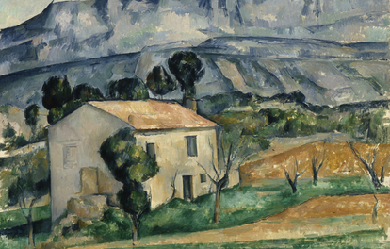
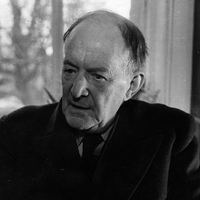
Walter John de la Mare (25 April 1873– 22 June 1956) was an English poet, short story writer and novelist. He is probably best remembered for his works for children, for his poem “The Listeners”, and for subtle psychological horror stories, amongst them “Seaton’s Aunt” and “Out of the Deep”. His 1921 novel Memoirs of a Midget won the James Tait Black Memorial Prize for fiction, and his post-war Collected Stories for Children won the 1947 Carnegie Medal for British children’s books.
.jpg)
Since as long as I can remember writing has been my escape from insanity. It is my one safe place where all the puzzle pieces fit. From an early age I fell in love with the written word. When I first learned to read I found my lifelong best friend. I can still remember reading poems from Shel Silverstein and being so enthralled that I was just read each and every poem over and over until I had every line of every poem memorized. It didn't take long before I too learned the power was not limited to others words, thoughts, and ideas. Books have always been my inspiration, but I quickly realized I didn't just want to read others words but I wanted to be the words read by others. I wanted to be that voice that inspired others. Writing has always been an innate part of my being and I know this will never change. It is the escape with my pen that has shown me who I am and who I want to be. I hope I can one day inspire others with my passion for the written word just as I was that first time I picked up a book and fell in love. My poems are sometimes dark, often reflecting the shadows in my heart, because I refuse to be dishonest with myself, but there is always light waiting for me when all the lies are gone. I'm truly blessed to have writing as a friend.
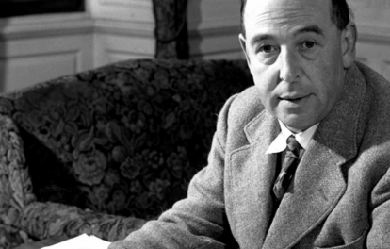
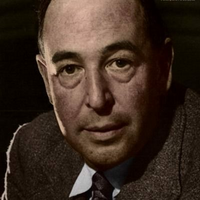
Clive Staples Lewis (29 November 1898 – 22 November 1963), commonly called C. S. Lewis and known to his friends and family as “Jack”, was a novelist, poet, academic, medievalist, literary critic, essayist, lay theologian, and Christian apologist. Born in Belfast, Ireland, he held academic positions at both Oxford University (Magdalen College), 1925–1954, and Cambridge University (Magdalene College), 1954–1963. He is best known both for his fictional work, especially The Screwtape Letters, The Chronicles of Narnia, and The Space Trilogy, and for his non-fiction Christian apologetics, such as Mere Christianity, Miracles, and The Problem of Pain. Lewis and fellow novelist J. R. R. Tolkien were close friends. Both authors served on the English faculty at Oxford University, and both were active in the informal Oxford literary group known as the “Inklings”. According to his memoir Surprised by Joy, Lewis had been baptized in the Church of Ireland (part of the Anglican Communion) at birth, but fell away from his faith during his adolescence. Owing to the influence of Tolkien and other friends, at the age of 32 Lewis returned to the Anglican Communion, becoming “a very ordinary layman of the Church of England”. His faith had a profound effect on his work, and his wartime radio broadcasts on the subject of Christianity brought him wide acclaim.


